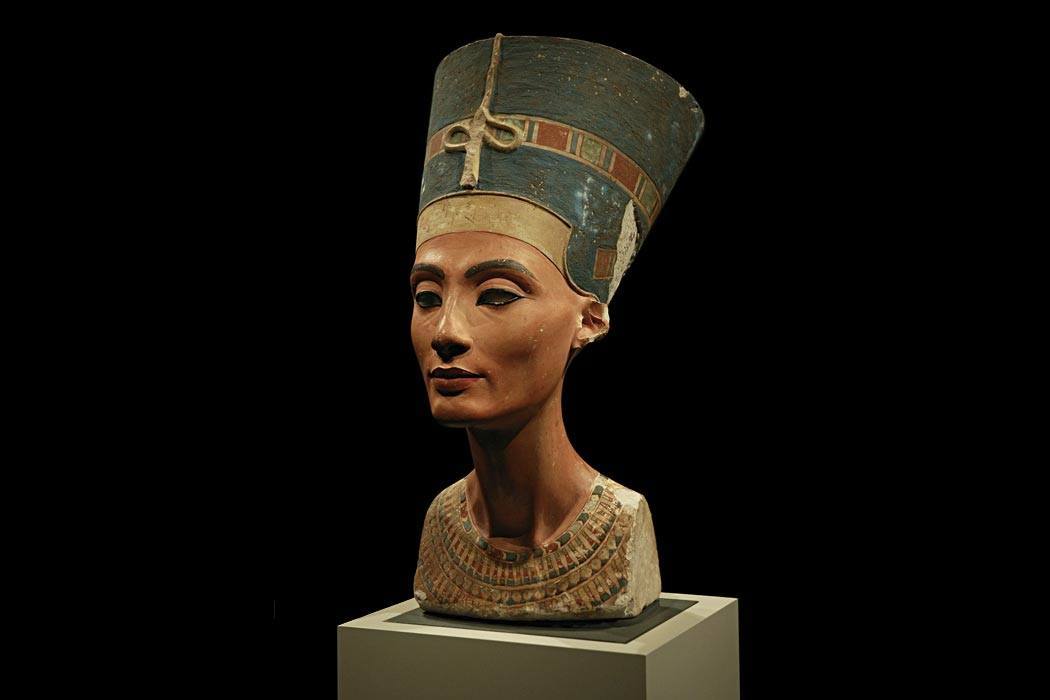While scanning the tomb of the pharaoh Tutankhamun, the famous King Tut, a University of Arizona archaeologist believes he may have found the undiscovered tomb of Queen Nefertiti. Deep beneath Egypt’s Valley of the Kings, the scans reveal the outlines of what might be a large passage hidden behind one of the walls, in a shape suggestive of the burial site of a major figure. Radar will confirm if it really is a passage, at which point things could get really interesting.
Nefertiti was the wife of pharaoh Akhenaten, who ruled Egypt around 1369-1352 BCE. Akhenaten was best known for a failed attempt to replace a millennia of Egyptian polytheism with monotheistic worship of the Sun-disk, Aten. The old system was restored after his death, but as described by Donald Redford, Queen Nefertiti is a mysterious figure who features prominently in temple carvings of the era. Temples at the ancient center of Karnak contain numerous depictions of Nefertiti making offerings to Aten. Sometimes she is even shown without the king, an almost unheard-of situation.
Clearly, Nefertiti was a figure of great importance, but how important? During his reign, Akhenaten moved his capital to Amarna, and here again Nefertiti features prominently in the décor. In what amounts to a feminist defense of Nefertiti, Julia Samson presents ample evidence that Nefertiti was in fact co-regent to Akhenaten, and probably solo-ruler for a time after his death (she was also either Tut’s mother-in-law or possibly his mother). Previous (male) archaeologists, including Redford, dismissed the idea of co-regency on the basis of one missing stella, but Samson catalogued ample evidence that Nefertiti was in fact co-regent. The carvings at Amarna depict a greatly expanded role for Nefertiti, who is shown wearing the distinctive crown of the king, driving her own chariot, steering a boat, and bestowing favors on subordinates. Most dramatically, she poses in victory brandishing a curved sword above a defeated enemy. These activities were all reserved exclusively for the king. If Nefertiti’s face was not clearly visible, Samson feared that her colleagues would try to deny that a queen could take part in such traditionally male activities.
Finding Nefertiti’s tomb would be a discovery of almost indescribable importance. She was clearly a very powerful figure, and a probable ruler of Egypt during a tumultuous time. In comparison, Tutankhamun was a minor ruler whose riches are impressive because his tomb had not been looted by grave-robbers. An unlooted tomb belonging to a figure of Nefertiti’s status has never been found. But based on ancient descriptions of grave goods, it’s likely to be quite a haul. Nefertititi went where few queens had gone before. She was an undisputed badass.







